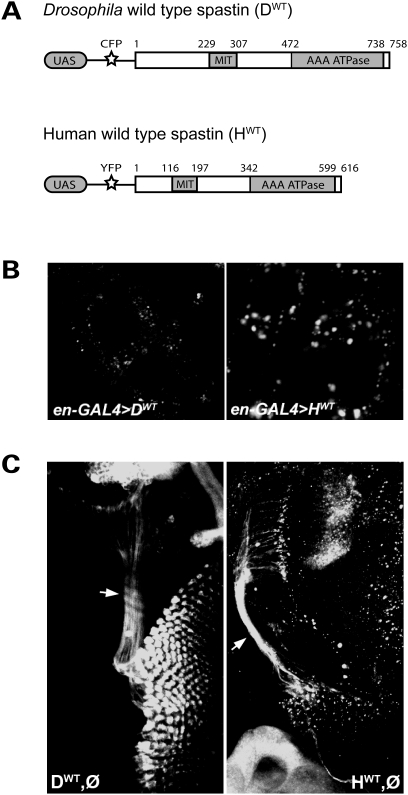Figure 1.
Fly and human spastin transgenes have similar subcellular distributions. (A) Constructs containing GAL4 binding sites (UAS) followed by genes encoding a fluorescent tag (CFP or Venus YFP) and either the spastin full-length wild-type fly genomic (DWT) or human cDNA (HWT) sequence were generated using the Drosophila Gateway system. Transgenic flies bearing either construct could then be used to express fluorescently tagged fly or human Spastin under the spatiotemporal control of a promoter-GAL4 line. Numbers denote amino acid position. (B) en-GAL4 was used to drive expression of the constructs in larval epidermal cells to reveal their subcellular distribution. Anti-GFP immunostaining shows, in both cases, diffuse cytoplasmic signal with scattered aggregates. No expression is detected in the nucleus. (C) A single copy of wild-type Drosophila or human spastin driven by GS-elav-GAL4 in the spastin null background (genotypes DWT,Ø and HWT,Ø, respectively) induced pan-neuronal spastin transgene expression. Anti-GFP reveals cytoplasmic expression of both proteins in neuronal cell bodies as well as their processes, including the long photoreceptor axons (arrows).

